Cytokine storms may cause death and destruction during coronavirus (Covid-19) infection. Therefore, we should take measures to prevent them. In that manner, we can shorten the lethal path of Covid 19.
Answers to the coronavirus epidemic. By Marc Sorenson, EdD
Cytokine storms are major causes of death from coronavirus (Covid-19) and resultant pneumonia.
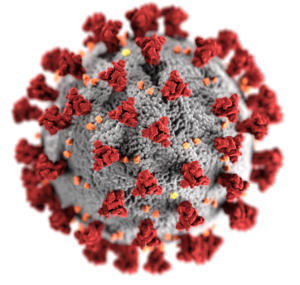
- This article will present information showing that we may have the tools needed to suppress coronavirus (Covid 19).
- The article will explain how the cytokine storm kills persons with coronavirus infection.
- It will explain the role of vitamin D in suppressing the cytokine storm.
- The presentation will show that non-burning, regular sun exposure is superior to taking a vitamin D supplement.
- It will show, graphically, the seasonal nature of flu-like diseases and make it clear where the sun fits in.
- The article will show the efficacy of sunlight for Covid-19, both outside and inside the body.
- The presentation will include information on the terrific increase in death among African Americans. African Americans need far more sun exposure than people with lighter skin.
- It will present information on the incredibly healthful effects of sunlight both with and beyond vitamin D.
- This article will expose the lies and present the truth about melanoma, to remove the fear of sun exposure for that disease.
- The presentation will elucidate the concerns about different skin types, and present them graphically.
- The presentation will also articulate the truth about sunscreens and explain the best method for preventing damage once one has had sufficient sun exposure.
- The article presents methods to keep vitamin D levels high in areas of little sunlight. It also presents the means to survive winter, when no UVB light exists to produce vitamin D.
- The presentation will discuss information on obesity, diabetes and heart disease, which are each associated closely to death from Covid-19.
- This discussion provides information showing that sunscreen use may quash the ability of sunlight to produce vitamin D. This will inhibit the body’s ability to stop the cytokine storm.
Breaking news!
As I prepared to post this article, Yahoo released news of transcendent importance. They corroborated statements about sunlight being able to kill Coronavirus. I had been making this statement since the first onslaught of the virus. Some people agreed and some ridiculed me. This Yahoo information from the DHS vindicates me!
The headline reads Sunlight destroys virus quickly. [Emphasis mine]. They also stated that “simulated sunlight” killed the virus. The government tests proved the efficacy of sunlight. The remainder of this article now has an even greater validity.
What is coronavirus or Covid-19?
Coronaviruses are a group of viruses that infect birds and mammals. These viruses infect the respiratory passages with such diseases as influenza and the common cold. They also lead to some severe diseases such as Middle East Respiratory Syndrome (MERS) and Severe Acute Respiratory Syndrome (SARS). The most recent of these diseases is Covid-19.
An important fact: the most severe respiratory pandemic was the Spanish flu of 1918-1919, which probably killed 50-100 million people. This flu started in March 1918. Vitamin D levels would have been lowest during that time. The flu subsided during the summer (time of highest vitamin D levels), and rebounded with a vengeance in the fall.
A second important fact: If you die from coronavirus, it is likely that your own immune system will kill you. You will die from a cytokine storm.
What is a cytokine?
A cytokine is a specialized protein molecule that attacks and destroys an infection. These proteins can be either pro-inflammatory of anti-inflammatory. For our purposes, we will primarily discuss pro-inflammatory cytokines.
What is a cytokine storm? Usually, the cytokine needed to fight the infected tissue stops its attack after it has won the battle. However, in the case of a disease like influenza (or Covid-19), “friendly fire” occurs. The body’s immune system recruits millions of “extra” or reinforcing cytokines, and those cytokines mount an overwhelming attack against the tissue they initially protected; in other words, they cause a storm. Cytokine storms lead to severe inflammation that weakens or destroys blood vessel membranes in the lungs. This causes fluid to seep through to the air sacs, which leads to pneumonia. A person then ends up drowning in his own body fluids. Dr. Angela Rasmussen describes it thusly: “Basically you’re bleeding out of your blood vessels.” She goes on to say that the problem may not end there. The storm spills into the circulatory system and can create systemic issues across multiple organs.
Does vitamin D thwart the cytokine storm?
Vitamin D leads to the production of cathelicidins and defensins, which are peptides (proteins) with antimicrobial properties. According to Dr. William Grant and colleagues, these peptides lower viral replication rates and reduce concentrations of pro-inflammatory cytokines. These cytokines produce the inflammation that injures the lungs. Nevertheless, the damage does not necessarily end in the lungs.
Recent research shows that the damage from Covid-19 can spread to multiple organ systems. The report on this research suggests that the cytokine storm may be responsible for that spread. The heart, liver, kidneys, neurological system and gastrointestinal tract may all be targets of Covid-19 beyond the lungs.
In addition, Dr. Grant and colleagues list the following reasons to believe that vitamin D could reduce the risk of the coronavirus:
- Inducing production of cathelicidins and defensins that can lower viral survival and replication rates as well as reduce risk of bacterial infection
- Reducing the cytokine storm that causes inflammation and damage to the lining of the lungs that can lead to pneumonia
- Additionally, vitamin D deficiency contributes to acute respiratory distress syndrome, a major cause of death associated with COVID-19.
If what I posit were true, we would expect Covid-19 to be higher in populations with high vitamin D deficiency, and such is the case.
Henry Lahore, one of the great vitamin D scholars, has listed four racial groups with disproportionately high vitamin D deficiency: Elderly Italians, Spanish, Swedish Somalis and African Americans.
Many of you have read of the alarmingly high Covid-19 death rate in African Americans. From my previous research, I know that African Americans also have alarmingly low vitamin D levels. Lahore also cites research that shows 84% of African Americans are vitamin D deficient. In addition, in Chicago, 70% of Covid 19 deaths are among Blacks. The reason for the deficiency? Dark skins take much more time in the sun to produce vitamin D. Unfortunately, our answer to Covid-19 has been to cocoon everyone indoors, which assures that no one can obtain any vitamin D except by supplement; that is, unless they are fortunate enough to own sunlamps or sunbeds (tanning beds).
An alarming situation in Sweden
Even more alarming is that the Swedish Somali population has 40% of the deaths in Sweden. Yet, they comprise only .84% of the Swedish population. In other words, the Dark-skinned Somalis have 4,700% greater risk of death from Covid 19! This can only be due to lack of sufficient sunlight and subsequently, low vitamin D. No such death risk exists in Africa, where sunlight is abundant.
Does sun exposure make a difference?
We live in a world that is mostly vitamin D deficient. Even sunnier states and countries have an increasing problem. However, Northern countries are at much more risk for Covid-19. The reason for the growing risk in sunny countries is the misguided advice to stay out of the sun and wear sunscreens, which can stop the production of up to 99% of vitamin D. I believe we must stop shunning the sun if we wish to halt flu epidemics, including the current Covid-19 epidemic. Otherwise, we will spend our time pursuing vaccines for a disease whose answer is already available. The real pandemic is the pandemic of sunlight deficiency.
If sunlight makes a positive difference for flu, and suppresses the cytokine storm, we would expect to see decreases in flu during the sunny season.
This is exactly the case. Consider the following chart: (Produced by WHO), sent to me by Goran Olsson, Moscow, Russia).
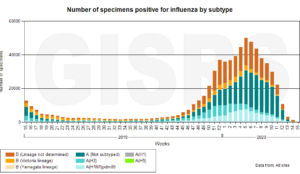
Observe what happens in the sunny part of the year. The incidence of flu virtually disappears. So, when the experts hypothesize that Covid 19 will spike again this fall, they are correct. That is, unless corrective measures are taken.
There are those who believe that warm temperature halts flu in summer. However, if that were true, we would need only to turn our thermostats up to 90 degrees to kill the virus and stop the cytokine storm. It is sunlight, not warm temperature, which is the great healer.
There are two ways in which sunlight helps halt the flu and probably Covid 19.
First, exposure to sun produces 90% of serum (blood) vitamin D. Supplementation or food sources produce only a minuscule quantity of vitamin D. Full-body sun exposure for 10-15 minutes can cause the skin to produce 20,000 IU of vitamin D. Based on this fact, here is the effect of sun exposure on the Covid 19 equation:
Sunlight-> vitamin D ->inhibition of the cytokine storm-> Prevention or stoppage of death from Covid-19.
Secondly, sunlight is the best disinfectant, and many viruses live longer outside the body when sunlight is lacking. Whether this is true for Covid-19 is conjecture. It would be good to do that research now. Regularly disinfecting homes with UV light would be easy and safe.
A common and dangerous misconception regarding sun exposure and vitamin D: “I don’t need sunshine; I need only vitamin D supplements.”
This statement shows a lack of knowledge. If we are to use sunlight to ramp up our vitamin D and other healthful photoproducts, we must stop fearing the sun. If we want to shut down the cytokine storm, we must develop a friendly, but careful relationship with sunlight. For health, sun exposure goes far beyond vitamin D. Here are more benefits of sunlight, including, but not limited to the benefits of vitamin D. For full documentation of these statements, read Embrace the Sun by Drs. Marc Sorenson and William Grant.
The prevention or reversal of the diseases underlined below do not depend on vitamin D.
Another sunlight concern, which should really be a non-concern: “if people soak up the sun, they will contract melanoma.”
To dispel this myth, here are the facts about melanoma, fully documented in the book, Embrace the Sun. This should belie the misinformation regarding melanoma and sunlight.
Seventy-five percent of melanomas occur on body areas seldom exposed to sunlight.
- In the U.S., as sun exposure has decreased by about 90% since 1935, melanoma incidence has increased by 3,000%. Documentation in Embrace the Sun. See the graph below.
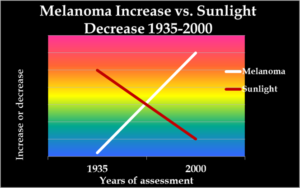
- As in the US, while sun exposure in Europe has profoundly decreased, there has been an exponential increase in melanoma.
- Men who work outdoors have about half the risk of melanoma as men who work indoors.
- Outdoor workers, while receiving 3-9 times the sun exposure as indoor workers, have had no increase in melanoma since before 1940, whereas melanoma incidence in indoor workers has increased steadily and exponentially.
- Sunscreen invention, along with its steadily increasing use, has not reduced the risk of melanoma. In fact, it has melanoma has increased as sunscreen use has increased. Documentation in Embrace the Sun.
- Increasing melanoma incidence significantly correlates with decreasing personal annual Sunlight exposure.
- Outdoor workers do get numerous sunburns but still have a dramatically lower risk of contracting melanoma.
Thus, melanoma increases as sun exposure decreases. Should we continue to blame the sun?
Here are more facts about melanoma and its prevention:
People in the highest quintile (fifth) of alcohol consumption have a 65% increase in melanoma risk.
A caveat regarding skin type: All people need sun exposure. However, people who have type-one skin must be very cautious.
Type-one skin may not tan, and should not have direct exposure to sunlight, at least in the beginning stages of a sunning program. Nevertheless, those who have type-one skin may carefully go outside and sit in the shade with the sun shining around them, or they could sit under a beach umbrella during a sunny day. The key is the amount of time it takes to show a slight pinkness. If that time is only a minute, then the person should go inside after that minute and cover up with clothing.
How to change your environment when you have had enough sun exposure.
If it takes longer for pinkness to occur, then stay longer. After a few days, the skin will acclimatize somewhat and longer times could be enjoyed. After the sunning session, it would be appropriate to don long pants, large hat, long sleeves and light gloves. The advantage for people with type-one skins is they produce large quantities of vitamin D and other photoproducts in a very short time. They, therefore, can quickly optimize the body’s ability to suppress the cytokine storm and to derive the other benefits of sun exposure that we previously listed. Sunbathing, or “shade bathing,” for those with type-one skin is the best way to obtain vitamin D.
Important information for African Americans, who need more vitamin D to suppress the cytokine storm.
In addition, this is a message to our two dear friends (African Americans) in San Francisco. You must spend much more than 10-15 minutes in the midday sunlight to optimize your vitamin D levels. Try to get at least 40-60 minutes of full-body exposure on each side of the body. This of course, applies to all African Americans. As with all races, be careful not to burn. For a person with very dark skin (type five-six) on the graph below, it takes an hour to produce the same quantity of vitamin D that a type-one can produce in a few minutes.
The following is a chart for determining skin type. Remember, that for every skin type, the primary warning is to avoid sunburn.
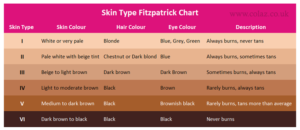
Many people believe that a few minutes outside, with face and hands exposed, will optimize vitamin D levels. However, that method takes far more than a few minutes to produce optimization. It may take all day, according to your skin type. If you find an area to sunbathe at midday with little or no clothing, you can produce up to 20,000 IU of vitamin D in as little as 10-15 minutes on each side of the body. After that, you can cover up with long pants, a large hat, long-sleeve shirt and even light gloves and continue to enjoy the outdoors.
An important statement from dermatologists and other organizations in the UK.
Here is a related statement from several health organizations in the UK, including the British Association of Dermatology (hard to believe, I know) “Vitamin D is essential for good bone health, and for most people sun is the most important source of vitamin D. The time required to make sufficient vitamin D varies according to a number of environmental, physical and personal factors, but is typically short and less than the amount of time needed for skin to redden and burn. Enjoying the sun safely, while taking care not to burn, can help provide the benefits of vitamin D without unduly raising the risk of skin cancer.” Documented in Embrace the Sun.
What about Areas of little sunlight?
However, suppose you live in unpredictable sun areas like Ely, Nevada or Ely, Minnesota, or Olympia, Washington or Toronto, Canada. As long as you can access unobstructed, midday summer sunlight twice weekly, as described above, you can count on optimized vitamin D levels. There is an exception for African Americans. An extra day per week would probably be a good idea.
Remember, no vitamin D production occurs during early morning of late afternoon. Nevertheless, many other healthful effects of sunlight are available all day long. Also, remember that in the beginning stages of your suntanning program, be careful not to burn yourself. If you begin to redden, leave the sun. Gradually acclimatize your skin to the sun.
Other facts about Covid-19, death and the cytokine storm:
Obesity is a major factor.
Obesity increases the risk of death from Covid-19. It is an inflammatory disease, as is Covid-19. In addition, it appears that a combination of the two can be deadly. This is predictable, because both the cytokine storm and obesity are inflammatory conditions. It is like pouring gasoline on a fire.
New York is the epicenter for Covid-19 in the U.S. NYU has determined that obesity and age are the two major deciding factors for hospitalization there.
People are thinner when they are outdoors and active.
Thus, the cocooning is likely adding to the likelihood of obesity. In addition, stay-at-home orders are neither conducive to sun exposure nor vitamin D optimization. I do not have the research to prove this point, but I believe that the enforced indoor living has added to the obesity crisis. How many bowls of ice cream do cocooned people consume nightly in front of the TV?
In our sun-drenched health resort, our clients lost more than 100 tons of fat during our careers. Much of that success was due to a mostly animal-free nutrition program. Yet, sun exposure does reduce weight. This is especially true of early-morning sun exposure. Early-morning sun exposure reduces obesity without the benefit of vitamin D. We know this to be true, because early morning sun exposure does not contain the UVB light necessary for vitamin D production. Nitric oxide or serotonin, produced throughout the day, could be the operative factors.
Type-two Diabetes is a major factor for death from Covid-19. Type-one is probably a factor also, but it comprises only 5% of cases. In addition, studies do not exist on the relationship of type-1 to Covid-19. Diabetes, then, is either directly or indirectly associated with the cytokine storm.
According to Morbidity and Mortality Weekly Report, Covid-19 patients taken to the ICU were more likely to have diabetes than any other underlying condition. In our former health resort (very sunny), two-thirds of type-two diabetics were free of all diabetic medications, including injected insulin, in 11.7 days. That number reached 85% in those who stayed four weeks. Of the 15% that were still using medication, almost all of them dramatically reduced their dosages. If people would simply embrace the sun and eat a plant-based diet, diabetes would cease to be a problem. Why? Because diabetes would mostly cease to exist.
Research on sunlight and diabetes:
Several papers have shown an association between sun exposure and diabetes. One paper showed that blood-sugar levels were lower during the summer, and another demonstrated that exposure to sun lamps increased insulin secretion.
In addition, a meta-analysis produced evidence that recreational sun exposure is associated with a reduced risk of type-two diabetes. The study was undertaken because the researchers observed that higher vitamin D levels were consistently associated with lower diabetes risk. Yet, there was not a relationship between vitamin D supplementation and diabetes. I must make a point here: Do not trust a vitamin D capsule to have all the health benefits of sun exposure or other UVB exposure.
Heart disease (cardiovascular disease) is a major factor for death from Covid-19.
Research from the same journal, Morbidity and Mortality Weekly Report, showed “10 % percent of COVID-19 patients with cardiovascular conditions died — the highest rate of fatalities among common underlying conditions — compared with 2.3 percent of the entire population of patients.” At our health resort, clients reduced cholesterol levels (predictive of heart disease, stroke and other vascular diseases) by as much as 700 points.
In addition, they sometimes lowered blood pressure remarkably in only one-four weeks. Angina often disappeared. In my opinion, the plant-based nutrition program, and the predictable sunny days in Saint George, Utah, both contributed to those results. One of our clients who had scheduled himself for open-heart quadruple bypass surgery, checked in at the health institute instead. His heart disease never gave him another problem. He was about 65 years old at that time and is now about 87. He never had a bypass operation.
Research on sunlight and heart disease.
Research indicates that sun exposure in summertime among gardeners correlates to lower cholesterol levels and decreased risk of heart attack. HDL cholesterol is protective against heart disease, and LDL cholesterol is a risk factor. A study in Chile showed that HDL decreases in the winter, and LDL is significantly higher in winter/spring than in summer. Of course, sunlight is much more prevalent in summer, hence the difference. A study on seasonal variations in heart attack rates in Brazil demonstrated a 30% higher risk in winter than summer. One study of hypertensive subjects shows that blood pressure levels average 165/90 in winter but 134/74 in the summer, and both stroke and heart attack rates double in the winter. We could list dozens of additional citations, but these will suffice for this short paper.
Should we use sunscreens while we sunbathe?
The simple answer is “no.” If people feel they have had sufficient sun exposure, they should seek shade, cover up or go inside.
There are many excellent reasons NOT to use sunscreens:
Two major studies in 2019 showed that sunscreens might be worthless or even harmful. The first, a meta-analysis, showed no protective effect of sunscreens against skin cancer. The second showed that people who used sunscreens had up to six times the number of sunburns compared to those that did not use them. This research also demonstrated that those who covered up, or sought shade when they had enough sun, were far less apt to sunburn than those who used sunscreens. In addition, in the last four decades, sunscreen use has increased by 400%, while melanoma incidence has also increased by 400%.
Sunscreens are also destroying coral reefs. Hawaii has banned them. Moreover, and perhaps most importantly, research shows that an SPF 15 sunscreen will decrease sun-stimulated vitamin D production by 99.5%. If it were our desire to thwart Covid-19, and halt the cytokine storm, why would we use sunscreens that suppresses vitamin D?
One of the primary government concerns is that after the summer, Covid 19 will mount a comeback, or second wave. Indeed, it will, if something does not replace the UV light from sunlight. Along with the disease, the cytokine storm will return in force.
Let us consider winter, when sunlight no longer contains UVB light to produce vitamin D. Go to the previous chart above on seasonality of flu and look at the tremendous increase that occurs in winter. How do we keep the virus under control? The answer is to use a sunbed (tanning bed). The sunbed must not be a high-pressure bed, as those beds produce little vitamin D.
I can already hear the collective screams of agony. Those screams emanate from the American Academy of Dermatology (AAD) and others as they read the vitamin D/sunbed statement. They are yelling, “How can he advocate sunbeds!?”
Do you want to read the truth about the AAD and other anti-sun, anti-tanning organizations? Then read the book, Embrace the Sun, which contains a full exposé.
Now, let us present the documented truth about sunbeds—truth that will never be presented by the anti-sun, anti-tanning organizations. Here are the facts about the healthful effects of sunbeds:
Refuting the Powers of Darkness (anti-sun organizations) regarding sunbeds. The Powers of Darkness are not interested in your cytokine storms.
Sunbeds (tanning beds), as you have learned, have many healthful properties. They produce vitamin D, strengthen bone and reduce the risk of major cancers. In addition, they may hold a key to stopping Covid 19 and the cytokine storm. Yet, the Powers of Darkness continue to malign them as being a major cause of melanoma. Thus, through misguided legislation, they ban teens in many areas from using them. In addition, tanning- salon owners must live in fear of government overreach that could put them out of business.
Because of this uproar, a group of scientists (some dermatologists), led by Dr. Jörg Reichrath, did a thorough research review. Furthermore, they published their findings in 2020 in a major scientific journal called Anticancer Research. That research presented the truth about melanoma and sunbeds. Here are four results of their review:
1.A study from Europe demonstrated that sunbed use was associated with a 30% reduced risk of developing melanoma.
2.They stated, “We found no studies that demonstrate a causal relationship between moderate solarium use and melanoma risk.”
3.The anti-sun research was low quality, and bias may have existed.
So, do not believe everything you hear about sunbeds from the Powers of Darkness. My belief is that sunbeds may hold the key to stopping the winter spike in Covid-19 cases.
You should always use sunbeds at a tanning salon whose employees are skilled in assessing skin types. That will keep you safe as you optimize your vitamin D and inhibit the cytokine storm.
How do you know if your serum Vitamin D is sufficient to suppress the cytokine storm?
Everyone should have a test for vitamin D levels. The goal is to produce a level between 50 and 70 ng/ml.
How do I know my time outside is producing vitamin D?
- If the media reports a UV index of three or more, and you are outside, not using sunscreen, vitamin D production occurs.
- If your shadow is shorter than your height, you are producing vitamin D. Thus, the shorter the shadow, the better. The shadow will be shortest at midday.
- To produce the greatest amount of vitamin D, find a private area and sunbathe, using as little clothing as possible. As mentioned, this can produce up to 20,000 IU of vitamin D in as little as 10-15 minutes of sun exposure at midday.
What have you learned from this article regarding Covid 19, sunlight, vitamin D and the cytokine storm?
Here is a list:
- This article presented evidence showing that we have the information needed to suppress coronavirus (Covid 19).
- The article explained how the cytokine storm kills persons with coronavirus infection.
- It also discussed the role of sunlight and vitamin D in suppressing the cytokine storm.
- It presented information that non-burning, regular sun exposure is superior to taking a vitamin D capsule.
- The article showed, graphically, the seasonal nature of flu-like diseases.
- This paper showed the efficacy of sunlight for Covid-19, both outside and inside the body.
- The presentation included information on the terrific increase in death among African Americans with Covid 19.
-
More lessons learned regarding sunlight and cytokines.
- The information showed the incredibly healthful effects of sunlight both with and beyond vitamin D.
- The presentation exposed the lies and presented the truth about melanoma, to remove the fear of sun exposure for that disease.
- The presentation elucidated the concerns about different skin types, and presented them graphically.
- The paper articulated the truth about sunscreens and explained the best method for preventing damage once one has had sufficient sun exposure.
- It presented the methods for keeping vitamin D levels high in areas of little sunlight and explained methods for surviving winter, when no UVB light exists to produce vitamin D.
- The presentation gave information on obesity, diabetes and heart disease, which are each associated closely to death from Covid-19.
- This discussion presented information that sunscreen use may quash the ability of sunlight to produce vitamin D. This will inhibit the body’s ability to stop the cytokine storm.
The materials in this paper cover the pertinent facts about Covid-19 and sunlight. However, no one can know all the facts, and this material does not replace your personal health advisors. Consult them before making lifestyle changes.
Please share this material with your physicians, friends, parents, siblings, social-isolating acquaintances, government entities, social media, regular media, and newspapers. The information contained herein may save their health and our economy. Until then, remember that neither sunlight nor sunbeds are enemies. In fact, they may save your life!
Happy sunning!

 Coronavirus, (Covid-19), like most flu-like diseases, will probably disappear in much of the Northern hemisphere in the coming summer. Nevertheless, it will return on steroids in the fall and winter. Yet, it does not have to return to you or your family and friends. We can do something! However, why wait? Let us start now! Does anyone reading this really want to wait for the “second wave” and then go into panic mode? Of course not. In addition, do you want to let the vaccine Nazis also spend $billions more of our tax dollars looking for a vaccine? Of course not. The answer to stopping coronavirus is all around us. We need only to seek it and use it.
Coronavirus, (Covid-19), like most flu-like diseases, will probably disappear in much of the Northern hemisphere in the coming summer. Nevertheless, it will return on steroids in the fall and winter. Yet, it does not have to return to you or your family and friends. We can do something! However, why wait? Let us start now! Does anyone reading this really want to wait for the “second wave” and then go into panic mode? Of course not. In addition, do you want to let the vaccine Nazis also spend $billions more of our tax dollars looking for a vaccine? Of course not. The answer to stopping coronavirus is all around us. We need only to seek it and use it.

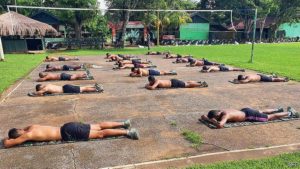
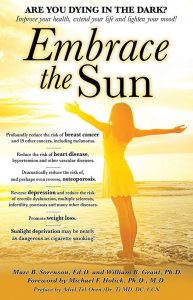

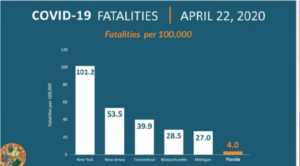



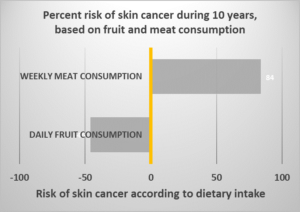


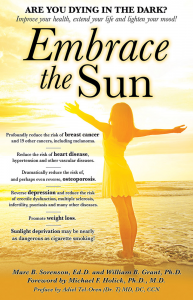
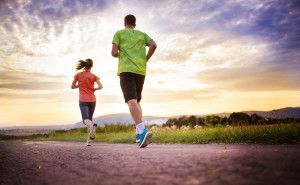
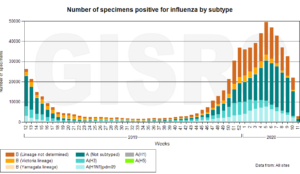
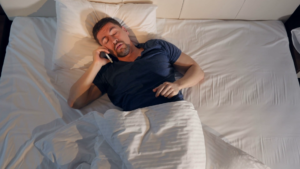
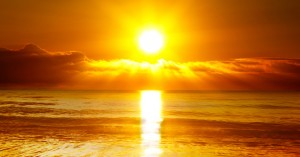

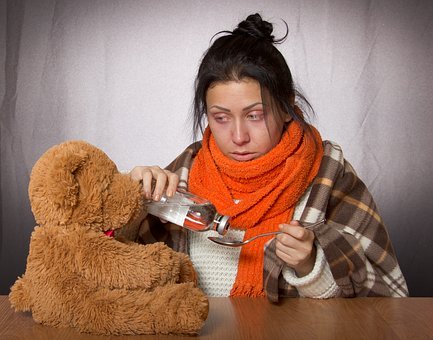
 d early fall, when I mostly worked on my father’s ranch. The sun blazed from dawn to dusk and I soaked it up. The work on our ranch was intense. We started those sunny days with morning feeding of animals, followed by irrigating, hauling hay and performing other outdoor tasks. Despite the long hours, I loved the sun, and it made the hard work worthwhile. Whenever possible, my shirt came off, and because of my deep tan, my friends called me “brown man.”
d early fall, when I mostly worked on my father’s ranch. The sun blazed from dawn to dusk and I soaked it up. The work on our ranch was intense. We started those sunny days with morning feeding of animals, followed by irrigating, hauling hay and performing other outdoor tasks. Despite the long hours, I loved the sun, and it made the hard work worthwhile. Whenever possible, my shirt came off, and because of my deep tan, my friends called me “brown man.”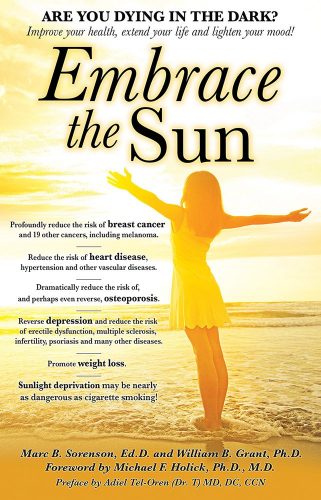 on-burning fashion. If the sun is not available, use a sunbed in non-burning fashion. Stop the flu before it stops us! Happy sunning!
on-burning fashion. If the sun is not available, use a sunbed in non-burning fashion. Stop the flu before it stops us! Happy sunning!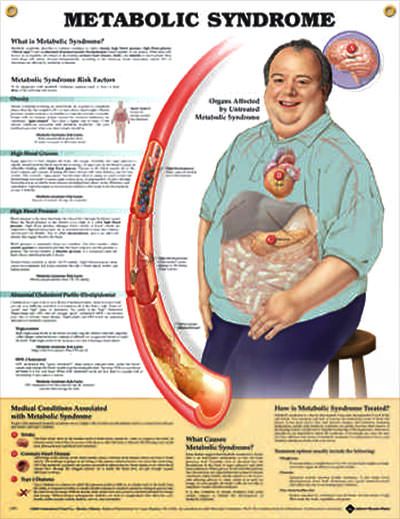
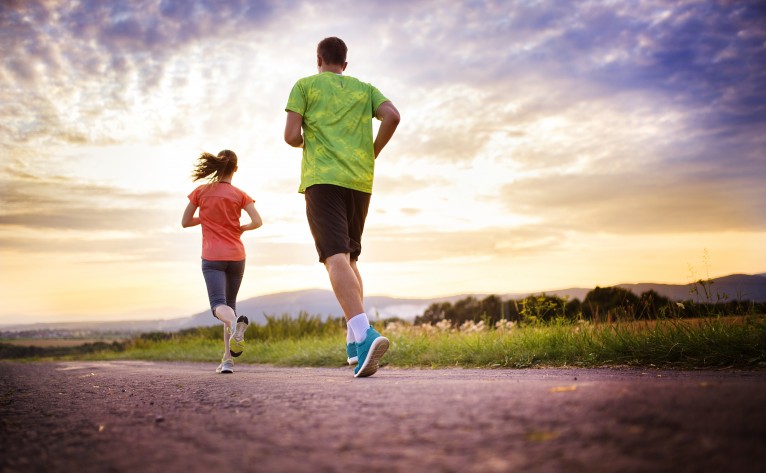

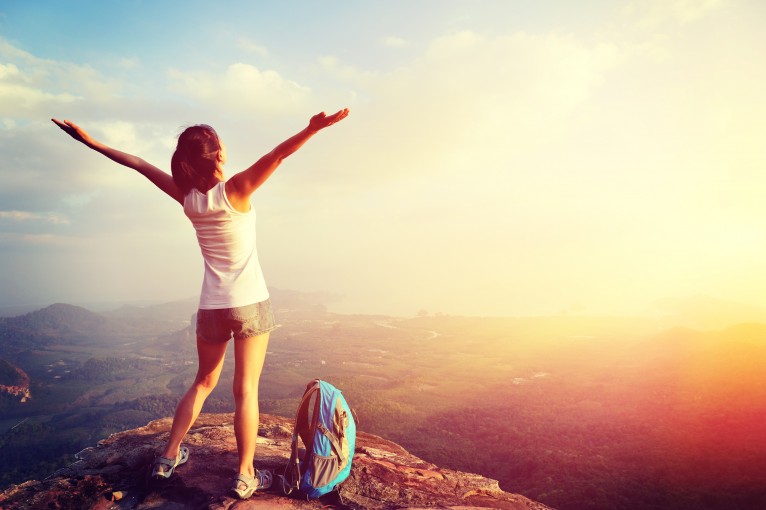 Sunscreen chemicals are toxic. I have written
Sunscreen chemicals are toxic. I have written